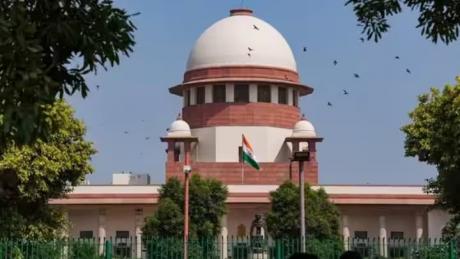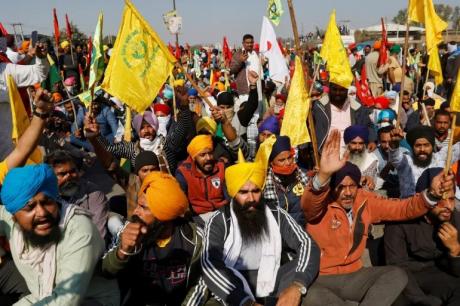Afghanistan has become the only nation in the current era to fall completely to the extremist group and the growing generations had taken a glimpse of an eerie precedent of power transition between a shaky regime and the insurgents. Behind this transition was a war that lasted for twenty years, which came to the conclusion with no signs of constant peace. The battle was fought between the US and NATO troops and the Taliban fighters and the US has recently withdrawn its forces from the country with the only tag of the longest-fought battle in its history, paving way for the Taliban to regain control of Afghanistan.
The two-decade wait for the group had come to an end on Sunday after the fighters successfully recouped Kabul, the capital of Afghanistan, and captured the presidential palace with the occupant Ashraf Ghani has fled the country to avoid the bloodshed. The current rise of Taliban was in an unprecedented fashion that it had collapsed the citadel built by the United States in twenty years, in just twenty days. The influx of fighters and capturing of major Afghan cities had dimmed the countering options of the Afghan government in barricading the fighters from getting close to the heart of the country. Late last week, the insurgents had captured Afghanistan's second-largest city of Kandahar, proclaiming their march towards Kabul.
It was all over on Sunday and surrendering seemed to be the best option for the Afghan government than to retaliate the fighters. The Taliban had announced that they had won and the war has come to an end as they entered Kabul and captured the presidential palace after talks with then-incumbent Ghani in the transition of power. Later, Ghani has fled the country and found a shelter in neighbouring Tajikistan. The American and NATO forces have completely withdrawn from the country with some troops were assisting in the evacuation drive of transporting the embassy staff and citizens to home. With the complete drawdown of forces and the Taliban's regain of control, the future of the Afghan people had become their past and let's take a look at the timeline of events of how the Taliban won recouping the control.
September 11, 2001: It all started from here...Osama Bin Laden's Al Qaeda had hijacked four American aircraft in the American airspace and crashed into the twin towers of the World Trade Center, which prominently added beauty to New York City's skyline. Of the other two planes, one had targeted the Pentagon while the other one had crashed on the field in Pennsylvania. The deadliest terrorist attacks had shaken the world and killed 2,977 fatalities and thousands of injuries.
The then ruling George Bush administration had prepared to retaliate against the attack. In less than a month after terrorists of al Qaeda carried out the attacks, American and allied forces had begun an invasion of Afghanistan in the name of 'Operation Enduring Freedom', to stop the Taliban from providing a safe haven to al Qaeda and to stop al Qaeda's use of Afghanistan as a base of operations for terrorist activities.
December 7, 2001: It was a fall for the Taliban as the extremist group had lost its last major stronghold as the city of Kandahar had gone to the control of the US and its allies. The United States had made Afghanistan have the longest engagement of its military as the country had ousted the Taliban rule and supported its allies by providing more personnel and military arsenal. Taliban had furiously refused the demands of the United States to hand over Bin Laden and his associates following which the US had launched an intensive bombing against the Taliban fighters, that resulted in a severe scattering and displacements of fighters with some of the big heads had fled the country.
2002: The Afghans had risen to a different era as the country was ruled by the US and NATO-backed democratic government. Hamid Karzai was elected as the interim president of Afghanistan, setting up a precedent that the country is on the path of democracy.
2004: The legal assembly of Afghanistan had adopted a new constitution and called for Presidental elections. Karzai, the interim ruler, had become the full-time president elected by the people. He has held the office till September 2014.
2005: The Afghan people had voted in the first parliamentary elections in more than 30 years and the Taliban was largely diminished in the territory as the full set-up of government was formed with the backing of US and NATO allies. Though there were some dissents against the regime, the government and the United States mission had successfully managed to keep the Taliban at the bay, though they didn't completely eliminate the extremists and win the war.
Although the Taliban had carried out sporadic attacks in different parts of the nation, they weren't in a fashion of an imminent resurgence of the group as the American forces had kept on its operation of countering the attacks of the Taliban. It must be noted that the US forces had killed Bin Laden in 2011 in Abbottabad, Pakistan. In January 2017, the Taliban had sent an open letter to then-newly elected US President Donald Trump in which the extremist group had called him to withdraw the US forces from the country.
Between 2017 to 2019: The global nations had seen incessant attempts at peace talks between the US and the Taliban. These talks took place in the Qatari capital of Doha with the weight of demands from both sides. The US has demanded the Taliban not to attack its troops and not to provide safe haven for al Qaeda and its affiliates and in return, the country has said that it will withdraw its forces from the Afghan soil. Amid several rounds of talks, the process didn't get a shape as a final agreement to retaining peace.
During the surprise trip to Afghanistan in November 2019 for a Thanksgiving visit with US troops, Trump has announced that peace talks with the Taliban were resuming. As per his announcement, the peace talks had resumed in Doha in December of that year.
February 2020: It was the birth of a historic agreement. The US and the Taliban had reached the deal after the US had agreed to the full drawdown of its troops from Afghan soil. Named as "Agreement for Bringing Peace to Afghanistan", the pact was filled with commitments and framework from both sides with an aim of bringing a permanent and comprehensive ceasefire. However, it didn't last long as according to the data provided to the Pentagon months after the agreement, the Taliban group had paced up its attacks on American troops and the attacks were at a large scale.
November 2020: There were signs that the United States had acknowledged that it has been fighting an 'unwinnable' war. President Trump has announced that the US troops will withdraw from Afghanistan by May 1, 2021. Earlier in July 2020, the US has reduced its presence from 13,000 to 8,600 and pledged for a complete withdrawal by May 1, 2021.
January 2021: There was a change of guard in Washington. Joe Biden has taken oath as the President of the United States and shown that he is going to construct his policy on Afghanistan in the footsteps of his predecessor. Apart from extending the deadline of complete withdrawal, Biden had expedited the talks with his Afghan counterpart sending a message of farewell that also had a component that Afghan forces should take care of the security of Afghanistan.
March 2021: Afghan President Ashraf Ghani and the Biden administration had proposed to the Afghan government that they enter into an interim-power sharing agreement with the Taliban.
April 2021: Biden announced a withdrawal deadline to September 11, marking the 20th anniversary of the US invasion of Afghanistan and the end of the two-decade war. The withdrawal has come amid the warning of UNSC that the members of al Qaeda are present in several Afghan provinces under the protection of Taliban, which according to NATO, has 85,000 active members.
May 2021: It's the exit of the US and entry of the Taliban...The extremist group had begun its resurgence from May as the sequel of the drawdown of US and NATO troops. The advancements of the Taliban were rapid since May 1 and they came in a force, killing Afghan civilians and capturing major cities. Parallelly, the US has vacated its major airforce base - Bagram base, which is close to Kabul. On May 3, a suicide attack that took place in Pul-e-Alam, the capital of Logar province, had claimed 21 lives and injured nearly hundreds. The Taliban had successfully captured Nerkg district, close to Kabul, on May 11.
July 2021: A big breakthrough for the Taliban! The extremist group had made a significant gain as it has captured half of Afghanistan's districts in a short period of time. Being in their last days, a US General said that the Taliban have gained control of about half of 419 districts in Afghanistan amid the promise from the US that it will continue supporting the Afghan troops till its final withdrawal by carrying out intensifying airstrikes against the Taliban. However, such strikes had no way helped the Afghan government to regain its lost homeland.
August 2021: The month where the Taliban took over the reign! On August 6, the Taliban had captured major provinces and around 26 of 34 provincial capitals had gone into the hands of the extremist group. On August 7, the Taliban had declared that they had captured the entire northern province of Jawzjan, including its capital Sherberghan. The group went on to take the control of Sar-e-Pul, an important city in Afghan's northern province. On August 12, the group had successfully captured Herat, the country's third-largest city and last Thursday, the insurgents took over the control of Afghan's second-largest city Kandahar.
From August 13 to August 15: These three days were enough for the Taliban to completely siege the country. On August 13, the group had captured the capital of Helmand province and on August 14, they captured the city of Mazar-i-Sharif and Jalalabad fell into the hands of the extremists the next day as they marched towards Kabul, the capital of Afghanistan. On Sunday, the group had announced that it had successfully entered and captured Kabul and held talks with President Ghani.
The group had then captured the Presidential palace as Ghani has fled the country. The Afghan leaders had seemingly developed a friendship with the Taliban as they received the top Taliban leaders who arrived in Kabul from Doha on Sunday as the government has completely fallen and the rise of Taliban is once again scripted in history. As the Taliban gets ready to take the charge to lead the country, Afghanistan's former interior minister Ali Ahmad Jalali could be the country's next president. On Sunday, Jalali has arrived from Washington, where he lived and worked at the National Defence University, to Kabul as the world watches the fall of Afghanistan. The stage is set for the transition with Afghan officials acknowledging that the cycle of power now spun to the Taliban.
As the US has deployed troops to evacuate its embassy staff and its citizens from Afghanistan, fled Afghan president Ghani said that leaving the country was a hard choice. In a social media post hours after fleeing the country, Ghani said, "I will always continue to serve my nation through offering ideas and programs. Today, I came across a hard choice; if I should stand to face the armed Taliban who wanted to enter the palace, or leave the dear country that I dedicated my life to protecting and caring for the past twenty years." "The Taliban have made it a point to remove me, they are here to attack all Kabul and the people of Kabul. In order to avoid the flood of bloodshed, I thought it was best to get out", he added.









Comments